Hexaphenylbenzene
- CAS NO.:992-04-1
- Empirical Formula: C42H30
- Molecular Weight: 534.69
- MDL number: MFCD00003057
- EINECS: 213-591-7
- SAFETY DATA SHEET (SDS)
- Update Date: 2025-01-27 09:38:02
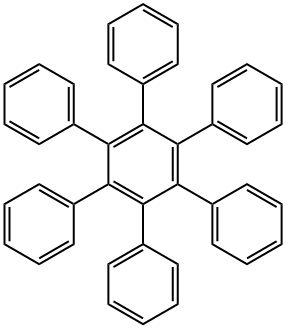
What is Hexaphenylbenzene?
Chemical properties
white to off-tan powder
The Uses of Hexaphenylbenzene
Hexaphenylbenzene was used to prepare the fluorescent nanorods used for the detection of trinitrotoulene (TNT).
What are the applications of Application
Hexaphenylbenzene can be used as a starting material to synthesize:
1,2,3,4,5,6-Hexacyclohexylcyclohexane by Pd/C catalyzed hydrogenation reaction.
Stable hexatrityl cations and porous organic polymers for applications in catalysis and gas storage.
Hexa-peri-hexabenzocoronene via one-pot substitution and oxidative cyclodehydrogenation reaction in the presence of t-BuCl/FeCl3.
as a structural unit for the synthesis of polymers of intrinsic microporosity.
What are the applications of Application
Hexaphenylbenzene is an aromatic compound
Synthesis
Hexaphenylbenzene has been prepared by heating tetraphenylcyclopentadienone and diphenylacetylene without solvent and by trimerization of diphenylacetylene with bis-(benzonitrile)-palladium chloride and other catalysts. The reaction proceeds via a Diels-Alder reaction to give the hexaphenyldienone, which then eliminates carbon monoxide.
Multi-Step Synthesis of hexaphenylbenzene from benzil
Procedure: Add 0.8 g of tetraphenylcyclopentadienone, 0.8 g of diphenylacetylene (synthesized by you in CH 2270 lab last semester), and 4 g of benzophenone to a 25 mL round-bottom flask. Place a magnetic stir bar in the flask. Make sure no material lodges on the neck or walls of the flask. Attach the condenser to the round-bottom flask. Do not attach the hoses. The condenser will be used as an “air condenser” for this experiment. Heat the reaction mixture VERY HIGH with the sand bath on the hot plate/stirrer. Benzophenone is your solvent and its boiling point is over 300 °C! Heat the reaction mixture to reflux. Carbon monoxide is evolved, the purple color begins to fade in 15-20 minutes, and the color changes to a reddish brown in 25-30 minutes. When no further lightening in color is observed (after about 45 minutes), the heat is removed and 1 mL of diphenyl ether is added to prevent subsequent solidification of the benzophenone. The crystals that separate are brought into solution by reheating and the solution is let stand for crystallization at room temperature. The product is collected and washed free of brown solvent with toluene to give colorless plates.
Properties of Hexaphenylbenzene
| Melting point: | >300 °C (lit.) |
| Boiling point: | 547.47°C (rough estimate) |
| Density | 0.8530 (rough estimate) |
| refractive index | 1.4690 (estimate) |
| form | powder to crystal |
| color | White to Light yellow |
| Water Solubility | Insoluble in water. |
| BRN | 1895903 |
Safety information for Hexaphenylbenzene
Computed Descriptors for Hexaphenylbenzene
New Products
Methyl (R)-1-Boc-4,4-difluoropyrrolidine-2-carboxylate 2,2-Difluoropropylamine hydrochloride tert-butyl 3-bromoazetidine-1-carboxylate (R)-1-Boc-3-hydroxypyrrolidine DIFLUOROACETIC ANHYDRIDE 2,2-Difluoropropionic acid Diallylamine, 99% Calcium hydroxide, 95% Aluminum oxide, basic 2-Bromophenylacetonitrile, 97% L-tert-Leucine,97% N-Hydroxy-2-methylpropanimidamide 4-(3,4-Dichlorophenyl)-3,4-Dihydro-N-Methyl-1-(2H)-Naphthalenimine (Schiff Base) 2-AMINO-3,5-DIBROMO BENZALDEHYDE [ADBA] L-Glutamic Acid Dimethyl Ester Hcl 10-Methoxy-5H-dibenz[b,f]azepine 5-Cyanophthalide N, N-Carbonyldiimidazole (CDI) Dibenzoyl Peroxide Titanium Dioxide 2-(Methylthio) Benzonitrile Sodium Acetate Anhydrous Allopurinol 1,5-DibromopentaneRelated products of tetrahydrofuran
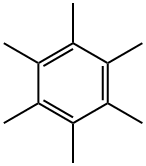
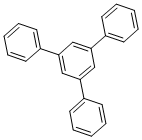
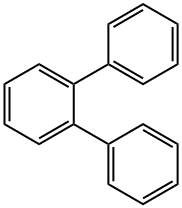
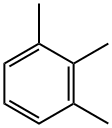
![2'-METHYL-[1,1':4',1'']TERPHENYL](https://img.chemicalbook.in/CAS/GIF/33776-38-4.gif)


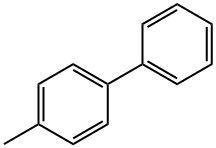
You may like
-
 Hexaphenylbenzene CAS 992-04-1View Details
Hexaphenylbenzene CAS 992-04-1View Details
992-04-1 -
 Hexaphenylbenzene CAS 992-04-1View Details
Hexaphenylbenzene CAS 992-04-1View Details
992-04-1 -
 Hexaphenylbenzene CAS 992-04-1View Details
Hexaphenylbenzene CAS 992-04-1View Details
992-04-1 -
 Ethyl-2-Chloroacetoacetate 609-15-4View Details
Ethyl-2-Chloroacetoacetate 609-15-4View Details
609-15-4 -
 CIS- BROMO BENZOATEView Details
CIS- BROMO BENZOATEView Details
61397-56-6 -
 609-15-4View Details
609-15-4View Details
609-15-4 -
![1-(6-Methylpyridin-3-Yl)-2-[4-(Methylsulfonyl)Phenyl]Ethanone [Ketosulfone] 99%](https://img.chemicalbook.in//Content/image/CP5.jpg) 1-(6-Methylpyridin-3-Yl)-2-[4-(Methylsulfonyl)Phenyl]Ethanone [Ketosulfone] 99%View Details
1-(6-Methylpyridin-3-Yl)-2-[4-(Methylsulfonyl)Phenyl]Ethanone [Ketosulfone] 99%View Details
221615-75-4 -
 27143-07-3View Details
27143-07-3View Details
27143-07-3
